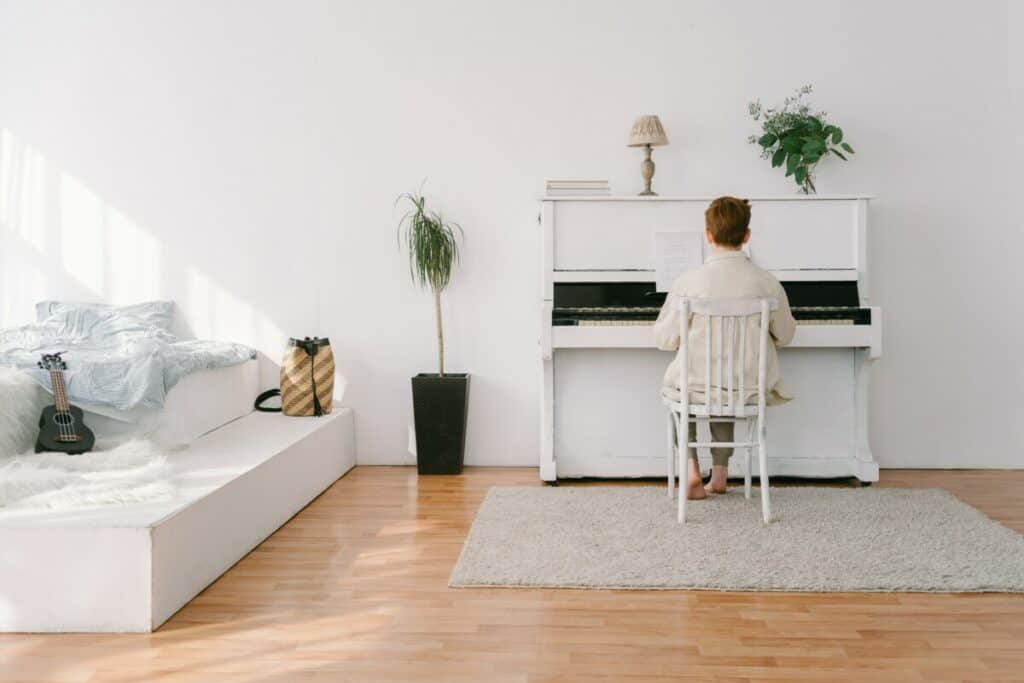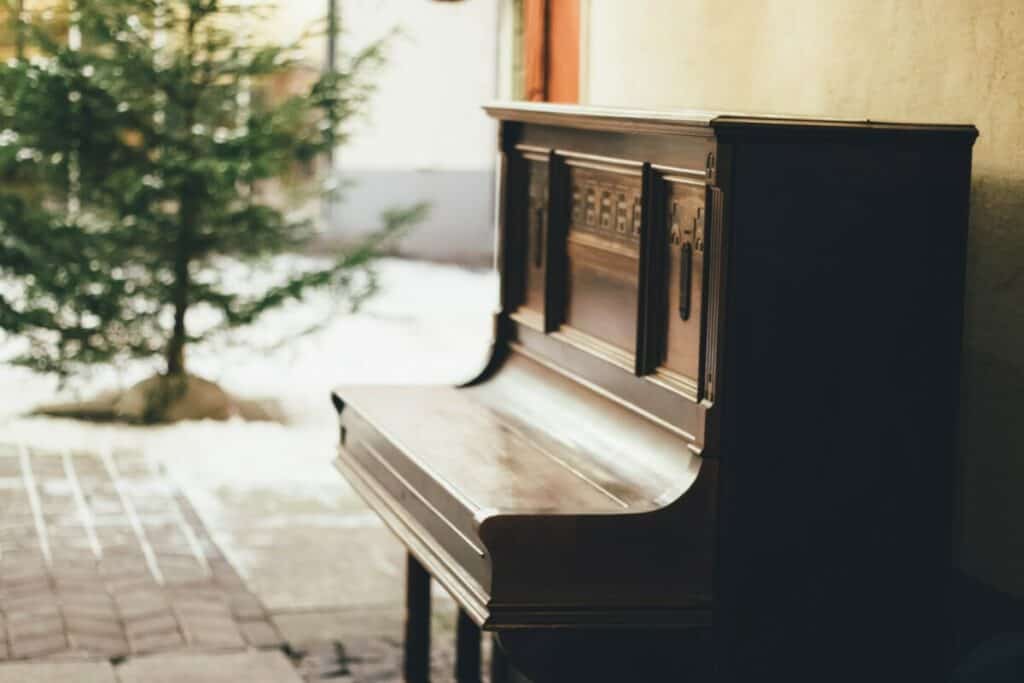This post contains affiliate links.

So, you’ve recently purchased a piano. Congratulations! Now you can immerse yourself in the world of music. However, regardless of the type of piano that you got, there are a few places to keep in mind NOT to put your piano at in order to make sure your piano lasts for a long time.
As a general rule, avoid putting your piano under direct sunlight, in places with too high or too low humidity and temperature, or places with fluctuating humidity and temperature. Doing so will ensure your piano won’t go out of tune and preserve its look.
Here are how humidity and temperature affect your piano and a couple of places in your home where you shouldn’t put your piano in.
Differences between humidity and temperature
Humidity is the amount of water in the air in the form of water vapour while temperature describes how hot or cold the climate is.
Usually, a change in temperature means also a change in humidity, although it may not be the case all of the time. Nevertheless, a piano’s reaction to sudden changes in temperature is similar to sudden changes in humidity.
How humidity and temperature affect your piano
In a damp environment, wooden components in the piano draw in moisture, causing the glued parts to become loose and potentially create moulds. Piano keys can seize up and become stuck.
The tuning pins holding the strings become loose, unable to hold the string tension, causing the piano to go out of tune. Furthermore, a damp soundboard causes a reduction in sound quality.
A dry environment can cause as much damage as a damp one. The dryness of the wooden components causes brittleness. And similar to a damp environment, the tuning pins won’t be able to hold the strings properly, causing the piano to go out of tune.
It’s also important to keep in mind that an extreme fluctuation in temperature and humidity is more damaging than just high or low humidity and temperature since it’s easier to deal with just high or low compared to wide swings.
Ideal humidity
Ideally, a piano is at its best in a constant environmental condition of 72°F (22°C) and at a 45% RH (relative humidity). However, this is impossible to keep realistically, so manufacturers have used materials that can withstand different environmental conditions to build their pianos.
You can keep track of the room’s humidity using this humidity meter (affiliate link)
Avoid vents
Avoid playing pianos near heating or air-conditioning vents since it can cause pianos to go out of tune more quickly.
The hot air that the vents blow absorbs moisture surrounding it, causing the relative humidity to drop, making the space near the vent dry. That’s why the inside of a house feels dry in the winter months when the heating is turned on.
Avoid basements and garages
Basements and garages by default have higher humidity compared to other rooms in the house. Thus, it’s not advisable to put a piano down there, unless you have a dehumidifier.
Don’t put your piano on the hard floor
Instead, place a rug or a carpet underneath your piano. This is because the sound that is created by the soundboard can be reflected by the floor, causing the sound to be harsh and brittle. A rug underneath the piano helps absorb this reflection.
If you have a wooden floor, another plus of a rug is that it will help prevent the piano from potentially scratching and damaging your floor.

Avoid placing near fireplaces, radiators, heaters or rooms with floor heating
Since all of these appliances emit heat, they can damage the piano. If you decide to place a piano in a room with floor heating, consider buying a special heat mat that isolates the piano from the direct heat.
Avoid putting near windows
This is to protect the piano from direct sunlight and UV rays since they can cause the piano’s finish to fade, wooden parts to dry out, and overall damage the piano. Although some pianos nowadays are made with heat-resistant wood, it’s still better to be safe than sorry.
If you decide to put a piano near a window, consider investing in blinds or reflective tint films used for car windows (affiliate link) or a piano cover (affiliate link) that is available on Amazon since they can prevent heat from travelling through.

Avoid outside walls
An inside wall is better at insulating heat, making the temperature more stable compared to outside walls. This helps protect the piano from sunlight and sudden changes in temperature.
Avoid putting the piano right up against the wall
Leaving a few inches between the piano and the wall helps improve the volume and richness of the sound since pianos are designed to produce to best sounds when placed a little bit away from the wall.

Far from kitchens, bathrooms
Although the idea of playing piano in the showers is entertaining, your piano will thank you for putting it far away from any sources of water.
Avoid doors (front doors, side doors, patio doors)
This is because whenever you open a door, the hot or cold air rushes in from outside, causing sudden changes in temperature inside, and could potentially make your piano go out tune quicker.
Avoid solariums
Solariums are very open spaces with lots of access to direct sunlight, so it’s better if you don’t put any pianos there.
What should I not put on top of my piano?
Placing decorations on top of a piano is often a great way to add some personality to it.
However, if you enjoy playing piano first thing in the morning, it goes without saying to remember to put your cereal bowl or coffee cup on a separate table and not on top of a piano since any possible spillings could spell trouble for your beloved instrument.
This rule also applies to any type of plant. Although vases and pots are waterproof, condensation from the plant will form underneath which will damage your piano.

Never put your piano outside
Common sense tells us that the outside is arguably the worst place to place a piano because of the unpredictable nature of the weather. Sudden changes in temperature along with rain will destroy the piano.
This is why if you need to store a piano, store it in a climate-controlled storage unit or a spare room in the house.
You may also want to read
Now that you know where not to put your piano, next is to learn how to clean your piano keys properly. Check out this article, where I talk about whether it’s safe to use cleaning agents like Windex or baby wipes to clean your keys.

